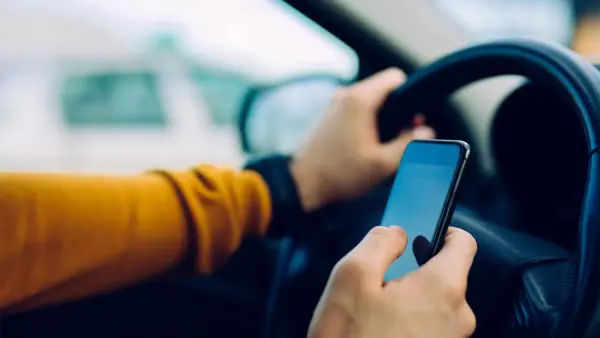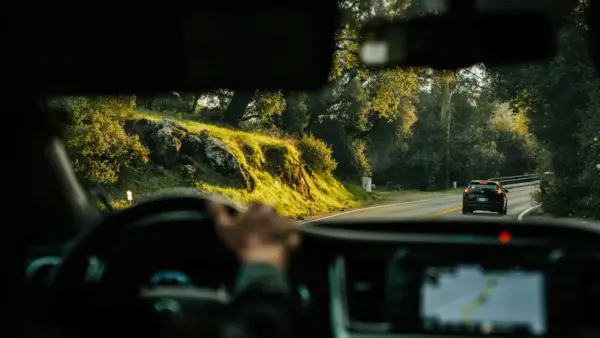Imagine you’re going about your daily errands and just when you’re getting into your car after buying groceries, someone reverses into you.
Anytime you’re involved in an automobile accident, knowing what next steps to take can be invaluable. Here’s what to do if you’re involved in a parking lot accident.
Here’s what you need to know about parking lot accidents in Ontario
Parking lot accidents are a lot more common than you might think. Roughly one in five traffic collisions that occur in Canada take place in parking lots, and despite the low speeds they can often result in serious injuries and property damage.
What’s more is that parking lot accidents, like any car accident, can affect your auto insurance. For this reason, many parking lot accidents go unreported, and hit-and-runs are common.
It’s a popular misconception that parking lot accidents should be treated differently than any accident on public roads, especially those that take place in residential lots. This is not true, and like all car accidents, if the estimated damage exceeds $2,000 or someone is injured, you’ll need to call the police and file an accident report.
Types of parking lot accidents
While it’s commonly assumed that both drivers are deemed equally at fault in most parking lot accidents, that’s not always true. Some of the most common types of parking lot accidents include:
- Vehicles competing for a spot collide. Usually this will result in near 50-50 fault, as both drivers will have some kind of responsibility for the collision.
- Vehicles hitting a stationary object. In these situations, the driver hitting the object will be assigned 100% fault.
- Vehicles hitting another vehicle that’s stationary. These are very common incidents, usually where the moving vehicle is backing out or pulling into a space.
- Vehicles backing up simultaneously. This may result in 50-50 fault for both drivers.
- Vehicles hitting cyclists or pedestrians. Parking lot spaces can be quite condensed, so it can be difficult to spot pedestrians and cyclists. Depending on the situation, the driver may be deemed at-fault.
- Vehicle rear ends another that’s stopped. Even though you may not be moving fast, there’s a lot of things to pay attention to while driving in a parking lot – and distraction may cause you to collide with another vehicle that’s stopped ahead of you. Usually, these collisions will result in the driver doing the rear-ending being assigned all or majority fault.
Insurance companies are responsible for determining fault. Each company has a team of adjusters who analyze the evidence, review the details of the accident, and apply Ontario’s “Fault Determination Rules” (which outlines specific guidelines for determining faults) to decide.
What to do following a parking lot accident
Follow these steps following a parking lot accident, as you would with any other traffic collision:

- If anyone was inside your vehicle at the time of the accident, check for injuries
- If possible, move your vehicle out of the way of traffic and put on your hazard lights
- Check to see if the other driver is alright and no one in their car is hurt
- Exchange information (insurance, license information, registration, etc.)
- If the estimated damage exceeds $2,000, report the accident
- If required, take your vehicle to the nearest collision reporting center
- Call your broker or your insurer
Going the “insurance route”
If you decide to file a claim after a parking lot accident, you’ll have to contact your insurer. Make sure to give them as much information as possible, including providing any photographs, documented witness statements, etc. With parking lot incidents, there’s the chance you could scrounge up security footage of the collision – which can go a long way, especially if the other driver was unable to be identified.
Speaking of unidentified drivers, what happens in the event of a hit-and-run where either the other party takes off or you come outside to see your car has been hit with no other driver in sight? Unfortunately, uninsured motorist coverage will only cover you if the other driver is identified (even a license plate will do) but underinsured/uninsured. To have coverage for a hit-and-run where the other driver can’t be identified, you’d have to have collision insurance.
What if your deductible is higher than the cost of the damages? Most drivers with collision insurance elect to have deductibles of $500 to $1,000, or even more in some cases. You won’t be covered if your deductible exceeds the cost of the damages.
You have a year to file a claim, but we suggest contacting your broker or insurer to get the process started as soon as possible. The quicker you get your car fixed, the sooner you can move on with your life.
Going the “non-insurance route”
In incidents where damage is very minor, which is sometimes the case with parking lot fender benders, drivers may elect to pay for damages out-of-pocket. You should still let your broker know about the accident. Why? Well, having a conversation with a broker about an accident isn’t the same as reporting to your insurer. Your broker can provide you with advice based on the scenario and then wait until you decide about what to do. If you are considering handling the matter on your own from the get-go, be sure to ask your broker not to report it to your company yet. The only time a broker has no choice but to report it is if the other party has already reported it to their company.
Paying out-of-pocket can be an option if the costs are manageable and you want to deal with them on your own. It also won’t affect your insurance premiums later if you go this route, and many at-fault drivers will choose this option assuming damage is minimal. Still, you’ll want to ensure you still get the other drivers’ information and that everything is in order. You don’t want to be given false information and have the other driver skip out, leaving you with the bill. Make sure you have their license number, insurance information, and license plate.
For further questions regarding getting hit in a parking lot, whether to file a claim, and other post-collision steps, give us a call. Our team of insurance brokers is always happy to help.
Thanks to Mitch Insurance’s Jesica Ryzynski, registered insurance broker since 1997, for her input on this post.
Looking for car insurance?
Speak with a Mitch Insurance broker today to get a quote on Ontario auto insurance.
Call now
1-800-731-2228







